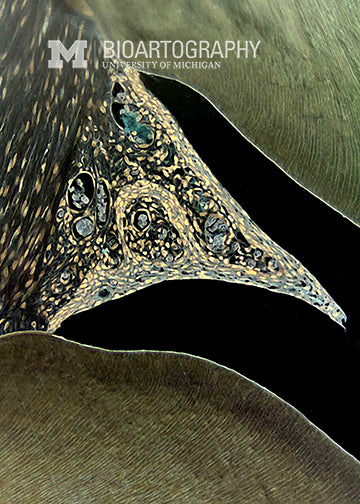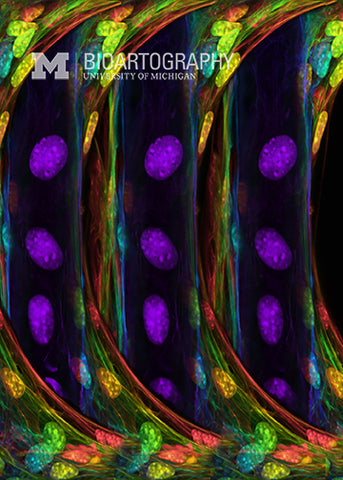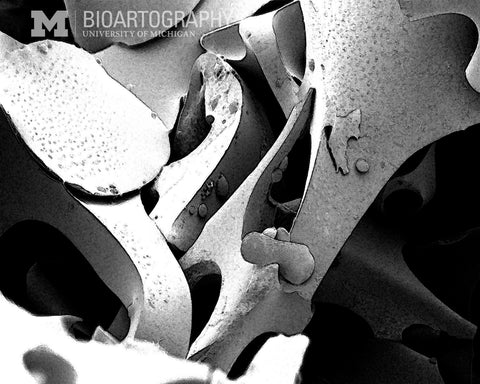

Jason Wang, Research Laboratory Specialist (Gionnobile and Taichman laboratories), University of Michigan School of Dentistry
The pointed structure in the center of this photograph is part of the gingiva, or the gum, between two teeth of a rat. Keeping this tissue healthy with regular brushing and flossing is important! Gingivitis is a condition that occurs when a sticky film called plaque builds up on teeth. Plaque contains bacteria, which secrete molecules that cause inflammation of the gingiva, or gingivitis. Left untreated, gingivitis can lead to a more serious condition known as periodontitis, in which gums recede and teeth may become loose. Research has shown that, in response to the bacteria in plaque, specific cells in the gingiva (colored yellowish grey in this image) secrete a protein called stromal derived factor-1 (SDF-1). Indeed, it has been shown that SDF-1 is expressed at higher levels in animal models of gingivitis and is reduced upon resolution of the irritation. Interestingly, it appears that SCF-1 actually participates in the inflammatory damage since it recruits blood cells that cause localized inflammation. Thus, although it is a bad guy in this story, SDF-1 can be a helpful biomarker for clinicians who want to follow the state of the inflammatory therapeutic process. Additionally, it is possible that strategies that reduce the levels of SDF-1 could be of benefit.



